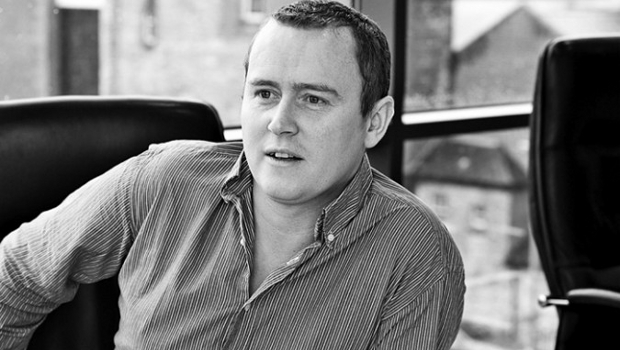Daniel Kelly is Professor of Tissue Engineering, director of the Trinity Centre for Bioengineering and leader of biomaterials platform at the AMBER centre for materials research. His work focuses on developing new approaches to regenerating damaged and diseased musculoskeletal tissues, and will be used to develop the next generation of implants targeting problems in orthopaedic and cardiovascular medicine.
Prof Kelly’s honours include a Science Foundation Ireland President of Ireland Young Researcher Award, a Fulbright Award, European Research Council awards and a Ssience Foundation Ireland Investigator award.
Most bioengineers come from either a life sciences or engineering background. Which side of the fence do you come from?
I come from an engineering background. I studied mechanical engineering as an undergraduate, and for my final year project worked on a biomedical problem. I found it fascinating. During my MSc I became aware of the field of Tissue Engineering, which was the area I worked in for my PhD project.
Your project initially looked at cartilage before moving on to bone. Was this an intentional progression?
My lab uses adult stem cells to try and grow new cartilage tissue to repair damaged joints. In many cases, however, joint damage or disease not only effects the articular cartilage that lines the ends of our bones, but also the bones themselves. This motivated us to look for novel solutions to regenerating both the damaged cartilage and bone in injured joints.
The idea of 3D-printed bones using metal and even new kinds of ink are gaining attention, your approach is more organic. Could you explain how it works?
Our bones are very complex organs kept alive by an equally complex network of blood vessels. At the moment it isn’t possible to print such a complex organ. However, our bones don’t start our life this complex. They form from a simpler cartilage tissue that transforms into bone during pre- and post-natal development. Instead of trying to print a functional adult bone organ with all its complexity, our idea was to print this simpler cartilage precursor and provide it with the environment to allow it to mature into an adult bone organ upon implantation into the body.
Using organic matter bring up the issue of how materials are sourced. Is this a case of the patient healing themselves or can/are external sources be used?
Both are possible. We could take cells from the patient themselves and print new tissues using these cells. The drawback here is that it takes time to isolate and grow up these cells. The alternative would be to use allogenic stem cells (cells taken from a donor). If we can understand how our bodies immune cells will respond to these cells, it may be possible to have banks of allogenic cells available in hospitals for 3D bioprinting applications.
Organ rejection is a constant risk with transplant patients. In looking at bone more like an organ than a structure could we see a similar phenomenon with printed prosthetics?
If we print tissues or organs using a patient’s own cells, then rejection won’t be a problem. The field still needs to figure out how to minimise the risk of rejection using tissues printed from allogenic cells.
Knowing we can develop a bone printing solution is one thing but implementing it is another. How quickly can, say, a forearm be produced. Is implementation as simple as ‘remove and replace’?
No, this would be extremely challenging. Printing a new limb would require not only printing bones, but also muscle, skin etc. The first step for us will be to demonstrate that we can regenerate critically sized bone defects, for example those caused by trauma or created when removing large bone tumours. The field will move slowly, but hopefully it can make meaningful differences to patients in the medium-long term.







Subscribers 0
Fans 0
Followers 0
Followers